Defective synaptic connectivity and axonal neuropathology in a human iPSC-based model of familial Parkinson's disease
- PMID: 28416701
- PMCID: PMC5422768
- DOI: 10.1073/pnas.1617259114
Defective synaptic connectivity and axonal neuropathology in a human iPSC-based model of familial Parkinson's disease
Abstract
α-Synuclein (αSyn) is the major gene linked to sporadic Parkinson's disease (PD), whereas the G209A (p.A53T) αSyn mutation causes a familial form of PD characterized by early onset and a generally severe phenotype, including nonmotor manifestations. Here we generated de novo induced pluripotent stem cells (iPSCs) from patients harboring the p.A53T mutation and developed a robust model that captures PD pathogenic processes under basal conditions. iPSC-derived mutant neurons displayed novel disease-relevant phenotypes, including protein aggregation, compromised neuritic outgrowth, and contorted or fragmented axons with swollen varicosities containing αSyn and Tau. The identified neuropathological features closely resembled those in brains of p.A53T patients. Small molecules targeting αSyn reverted the degenerative phenotype under both basal and induced stress conditions, indicating a treatment strategy for PD and other synucleinopathies. Furthermore, mutant neurons showed disrupted synaptic connectivity and widespread transcriptional alterations in genes involved in synaptic signaling, a number of which have been previously linked to mental disorders, raising intriguing implications for potentially converging disease mechanisms.
Keywords: Parkinson’s disease; axonal degeneration; dystrophic neurites; small molecules; α-synuclein.
Conflict of interest statement
The authors declare no conflict of interest.
Figures
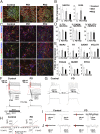
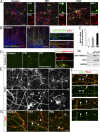
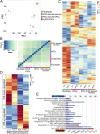
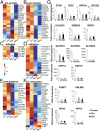
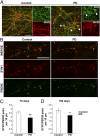
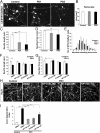
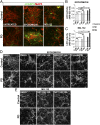
Similar articles
-
Nitration of microtubules blocks axonal mitochondrial transport in a human pluripotent stem cell model of Parkinson's disease.FASEB J. 2018 Oct;32(10):5350-5364. doi: 10.1096/fj.201700759RR. Epub 2018 Apr 24. FASEB J. 2018. PMID: 29688812
-
Cellular α-synuclein pathology is associated with bioenergetic dysfunction in Parkinson's iPSC-derived dopamine neurons.Hum Mol Genet. 2019 Jun 15;28(12):2001-2013. doi: 10.1093/hmg/ddz038. Hum Mol Genet. 2019. PMID: 30753527 Free PMC article.
-
Generation of gene-corrected iPSC line from Parkinson's disease patient iPSC line with alpha-SNCA A53T mutation.Stem Cell Res. 2018 Jul;30:145-149. doi: 10.1016/j.scr.2018.06.002. Epub 2018 Jun 9. Stem Cell Res. 2018. PMID: 29906669
-
Modeling Parkinson's disease with induced pluripotent stem cells harboring α-synuclein mutations.Brain Pathol. 2017 Jul;27(4):545-551. doi: 10.1111/bpa.12526. Brain Pathol. 2017. PMID: 28585381 Free PMC article. Review.
-
The regulatory role of α-synuclein and parkin in neuronal cell apoptosis; possible implications for the pathogenesis of Parkinson's disease.Apoptosis. 2010 Nov;15(11):1312-21. doi: 10.1007/s10495-010-0486-8. Apoptosis. 2010. PMID: 20221696 Review.
Cited by
-
In vitro electrophysiological characterization of Parkinson's disease: challenges, advances, and future directions.Front Neurosci. 2025 Apr 30;19:1584555. doi: 10.3389/fnins.2025.1584555. eCollection 2025. Front Neurosci. 2025. PMID: 40370660 Free PMC article. Review.
-
Dopamine and cortical neurons with different Parkinsonian mutations show variation in lysosomal and mitochondrial dysfunction.NPJ Parkinsons Dis. 2025 Jun 20;11(1):177. doi: 10.1038/s41531-025-01048-2. NPJ Parkinsons Dis. 2025. PMID: 40541941 Free PMC article.
-
Using Patient-Derived Induced Pluripotent Stem Cells to Identify Parkinson's Disease-Relevant Phenotypes.Curr Neurol Neurosci Rep. 2018 Oct 4;18(12):84. doi: 10.1007/s11910-018-0893-8. Curr Neurol Neurosci Rep. 2018. PMID: 30284665 Free PMC article. Review.
-
Patient-specific pluripotent stem cell-based Parkinson's disease models showing endogenous alpha-synuclein aggregation.BMB Rep. 2019 Jun;52(6):349-359. doi: 10.5483/BMBRep.2019.52.6.142. BMB Rep. 2019. PMID: 31186086 Free PMC article. Review.
-
Inactivation of Tumor Suppressor CYLD Inhibits Fibroblast Reprogramming to Pluripotency.Cancers (Basel). 2023 Oct 15;15(20):4997. doi: 10.3390/cancers15204997. Cancers (Basel). 2023. PMID: 37894364 Free PMC article.
References
-
- Lees AJ, Hardy J, Revesz T. Parkinson’s disease. Lancet. 2009;373:2055–2066. - PubMed
-
- Obeso JA, et al. Missing pieces in the Parkinson’s disease puzzle. Nat Med. 2010;16:653–661. - PubMed
-
- Schapira AH, Tolosa E. Molecular and clinical prodrome of Parkinson disease: Implications for treatment. Nat Rev Neurol. 2010;6:309–317. - PubMed
-
- Braak H, Braak E. Pathoanatomy of Parkinson’s disease. J Neurol. 2000;247:II3–II10. - PubMed
Publication types
MeSH terms
Substances
LinkOut - more resources
Full Text Sources
Other Literature Sources
Medical
Molecular Biology Databases
Miscellaneous

